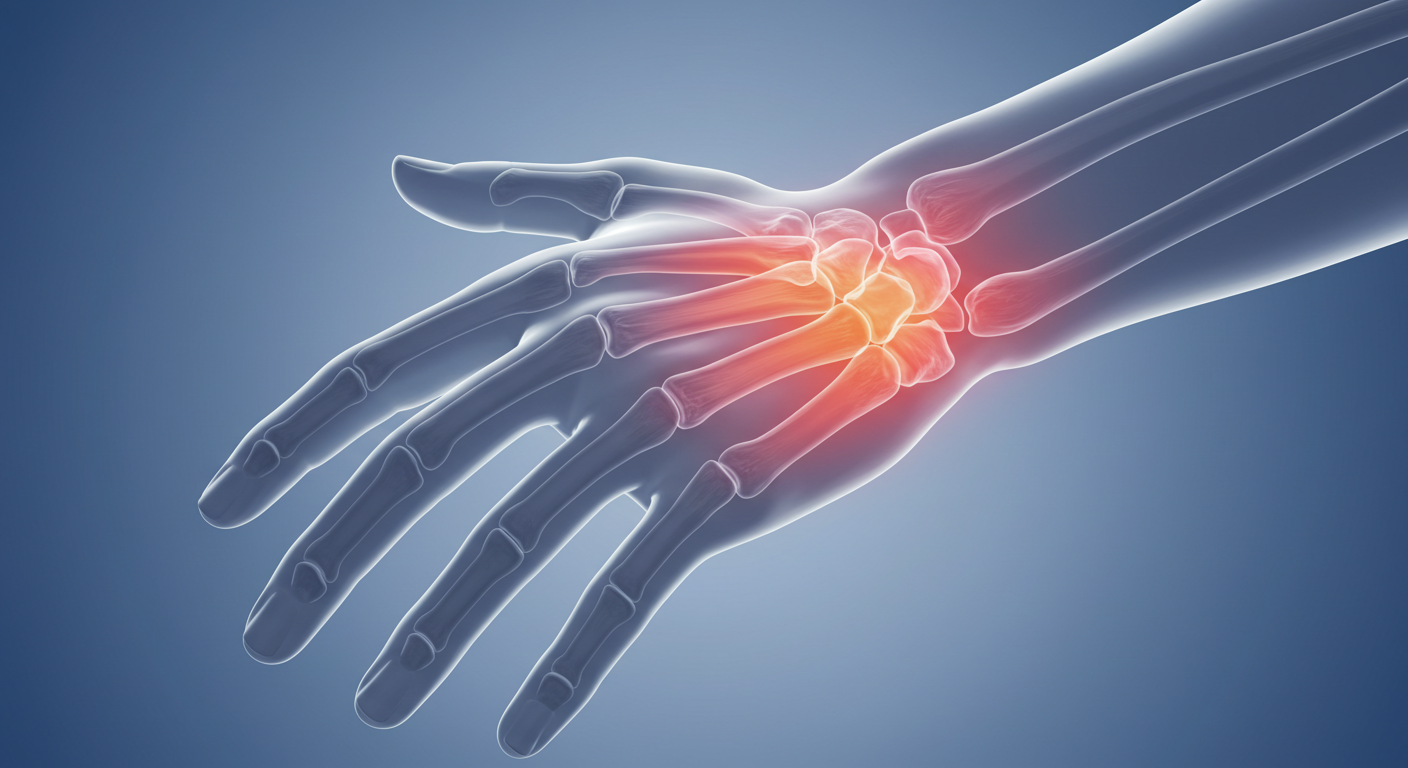
Carpal Tunnel Syndrome
Carpal tunnel syndrome can make everyday tasks—from typing to gripping a coffee mug—uncomfortable or even painful. At Elite Chiropractic, we take a whole-body approach to treatment, focusing not only on your wrist but also on the nerves, muscles, and posture that contribute to the problem. Here’s how we evaluate, treat, and help prevent carpal tunnel symptoms through personalized chiropractic care.
OVERVIEW
SYMPTOMS
Carpal tunnel syndrome can creep in gradually, starting with something as small as a tingle in your fingers or a slight ache in your wrist. Over time, those mild annoyances can grow into frustrating, daily disruptions—making it hard to type, write, or even grip a coffee mug. Understanding the symptoms is the first step toward getting relief. Here’s what to watch for:
-
Wrist Pain
Discomfort, soreness, or aching at the wrist, especially during or after activity. -
Tingling or Numbness
A “pins and needles” sensation, especially in the thumb, index, middle finger, and half of the ring finger. -
Weakness in the Hand or Wrist
A weakened grip or difficulty holding onto objects, often due to nerve irritation.
CAUSES
Carpal tunnel syndrome doesn’t usually appear overnight—it’s often the result of repetitive movements or chronic stress on the wrist over time. Whether you’re working on a laptop for hours, swinging a hammer on the job, or playing piano every day, certain patterns can contribute to nerve compression in the wrist. These are the most common activities and habits that lead to carpal tunnel syndrome:
- Overuse Injuries
Repetitive wrist movements—like typing, texting, or playing an instrument—can strain the tendons inside the carpal tunnel, leading to inflammation and nerve compression. - Frequent Wrist Flexion/Extension
Activities like writing, painting, or assembly line work that require repetitive bending or extension of the wrist can contribute to CTS over time. - Vibrating Tools
Operating power tools that vibrate, such as drills or jackhammers, can irritate wrist structures and increase the risk of developing CTS—especially in construction or manufacturing jobs.
DIAGNOSIS
Diagnosing carpal tunnel syndrome typically begins with a detailed consultation and physical examination. At Elite Chiropractic & Performance Center, your chiropractor will evaluate your symptoms, medical history, and lifestyle habits to understand the full picture of what’s causing your wrist discomfort. Diagnosis may include:
-
Physical tests – such as the Phalen’s test or Tinel’s sign, which help assess nerve function and reproduction of symptoms through wrist positioning or tapping.
-
Range of motion and strength testing – to detect weakness or limited movement in the wrist and hand.
-
Neurological screening – to evaluate sensation, reflexes, and potential nerve involvement extending from the neck down the arm.
-
Postural assessment – poor posture, especially from prolonged desk work, can contribute to median nerve compression.
-
Imaging or referrals (if needed) – in some cases, your chiropractor may recommend imaging (like an MRI or nerve conduction study) or refer you to a specialist to rule out other conditions or confirm a diagnosis.
A precise diagnosis ensures that your treatment plan is targeted, effective, and designed to address the root cause of your symptoms—not just mask the pain.
FAQs
Q: Can a chiropractor really help with carpal tunnel syndrome?
A: Yes! Chiropractors can address both the wrist and spine to relieve nerve interference, reduce inflammation, and improve function. Adjustments, soft tissue therapy, and lifestyle modifications can significantly reduce symptoms and often prevent the need for surgery.
Q: How many sessions will I need to feel relief?
A: Every patient is different. Some people experience relief within a few sessions, while others may benefit from a longer treatment plan depending on the severity and duration of their symptoms. Your chiropractor will personalize a care plan based on your progress.
Q: Will the adjustment hurt?
A: Chiropractic adjustments are generally not painful. You may feel a gentle pressure or hear a popping sound (from gas release in the joints), but most patients find the experience relieving. Any post-adjustment soreness usually fades within 24 hours.
Q: Is chiropractic care a long-term solution or just temporary relief?
A: Chiropractic care focuses on long-term health by treating the root causes of pain. It’s not just about feeling better temporarily—it’s about restoring function, improving posture, and preventing future flare-ups through holistic care.
Q: Do I need a referral from a medical doctor?
A: No referral is needed. You can call Elite Chiropractic directly to schedule an appointment. We’ll assess your symptoms and let you know if chiropractic care is appropriate for your condition.

EVALUATION
When you visit Elite Chiropractic for wrist or hand pain, we start by getting a clear picture of what’s going on. Our detailed evaluation process includes a thorough discussion of your symptoms, a physical exam focusing on the wrist and forearm, and often a closer look at your neck and spine. Because nerve issues in the hand can originate higher up the chain, we assess your entire kinetic system to ensure we’re not just treating the symptoms—but identifying the source. This whole-body approach helps us craft the most effective and individualized treatment plan for you.

CMT + THERAPIES
Chiropractic care for carpal tunnel syndrome goes beyond the wrist. At Elite Chiropractic, we use a combination of chiropractic manipulative therapies (CMTs) and soft tissue work to address tension, restriction, and inflammation throughout the upper body. Adjustments to the wrist can relieve pressure on the median nerve, while spinal adjustments—especially in the cervical spine—help calm irritated nerves at their origin. Our soft tissue therapies, including myofascial release and targeted stretching, reduce tightness in the forearm muscles that can aggravate symptoms. Together, these treatments support long-term healing and help restore natural movement and comfort.

PREVENTION + ERGONOMICS TIPS
Once your symptoms improve, it’s just as important to keep them from coming back. Our team will guide you through simple, effective ways to support wrist health in your everyday life. That includes ergonomic tweaks to your desk setup, posture corrections, and practical stretches you can do at home or work. Whether you’re typing, driving, or just scrolling on your phone, small adjustments to how you move and rest your hands can go a long way in preventing future flare-ups. Prevention isn’t just about avoiding pain—it’s about protecting your quality of life.
OUR ELITE APPROACH

STEP ONE:
PAIN RELIEF
Fix your pain without pills or surgery and get you back to life, sport, or work. We’re trying to get your pain under control and start you on your way to a full recovery.

STEP TWO:
RETURN TO FUNCTION

